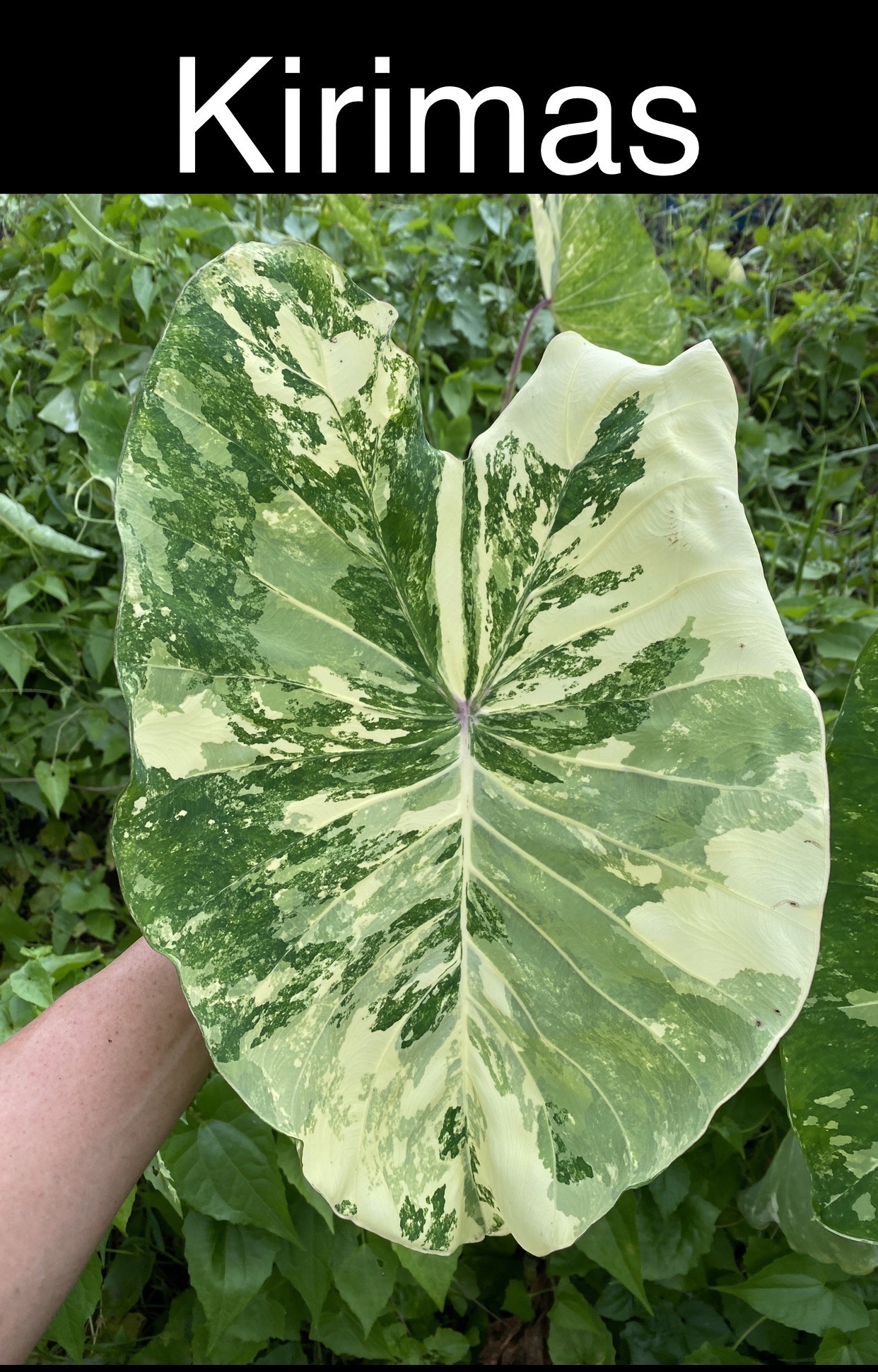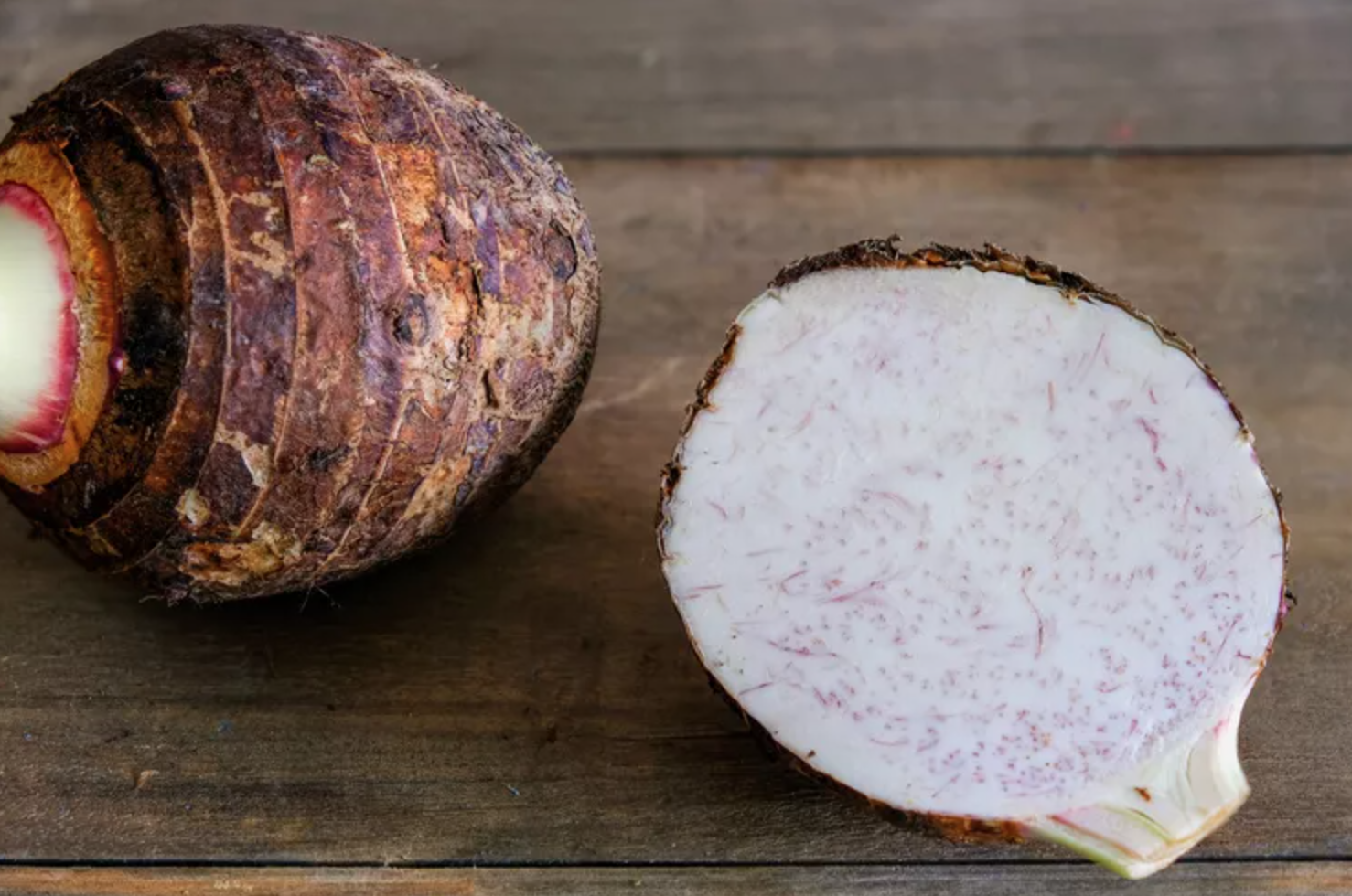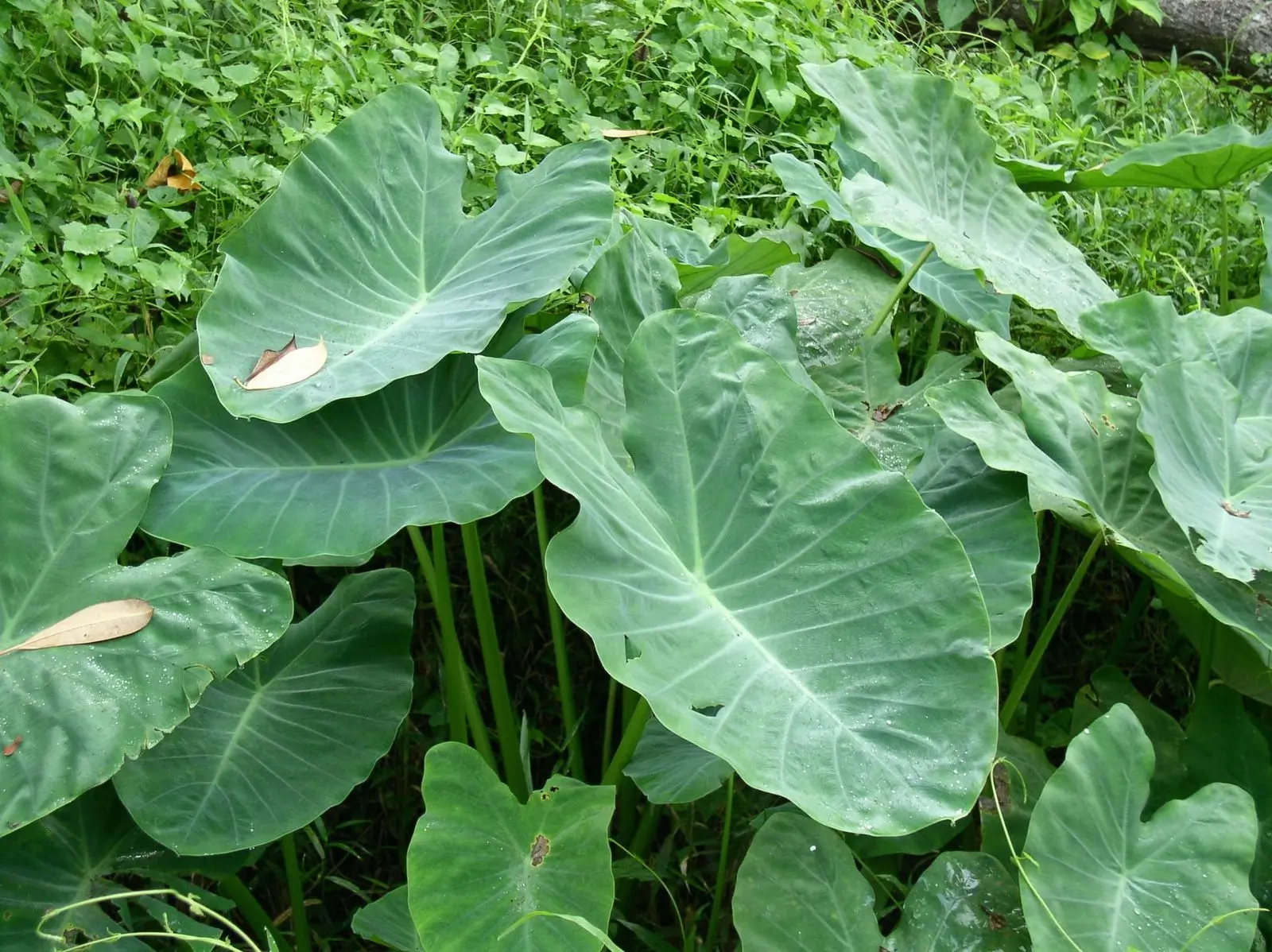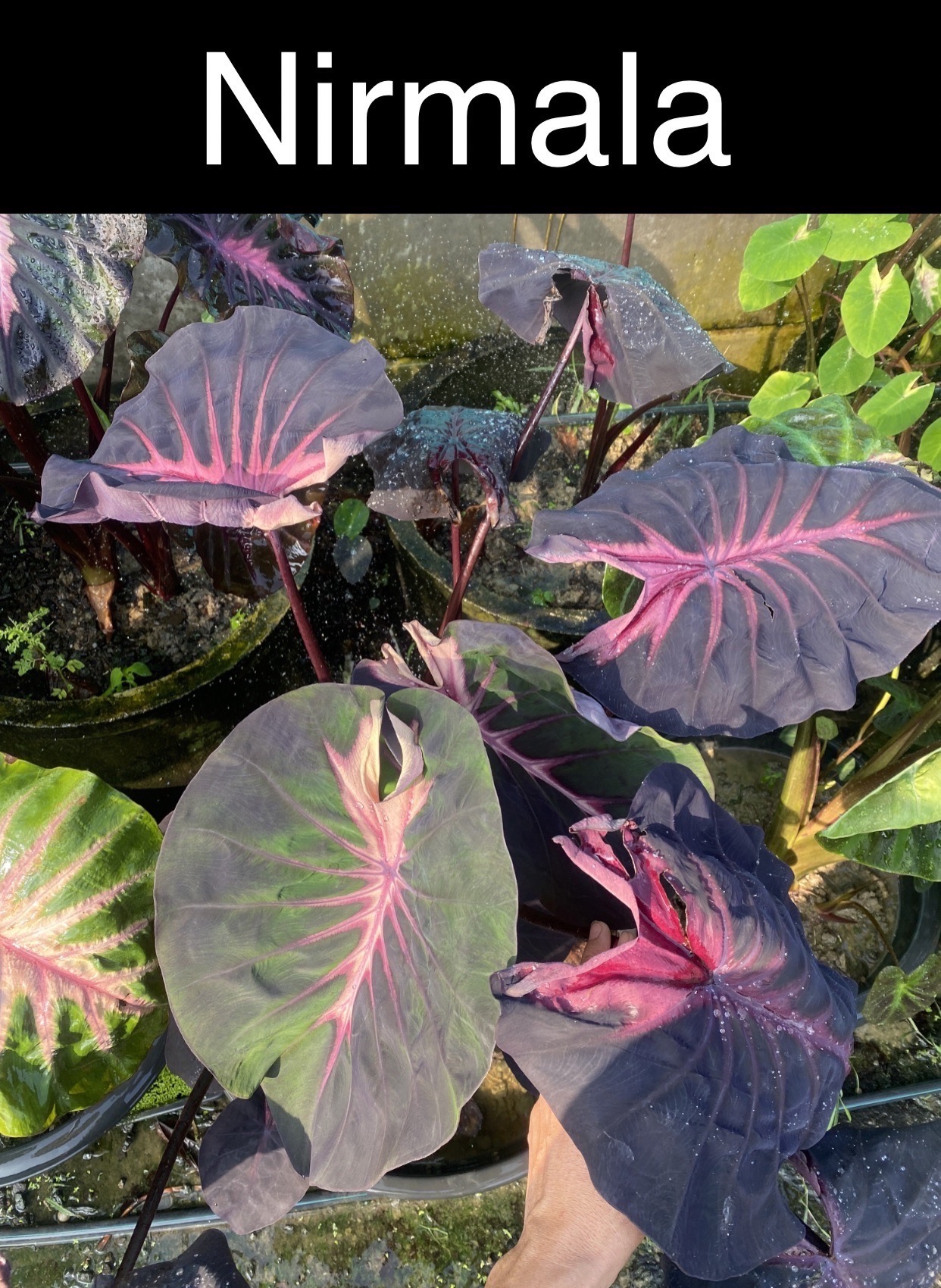Colocasia, commonly known as taro, is a starchy root vegetable that has been a staple food in many parts of the world for centuries. Native to Southeast Asia, this versatile plant is now cultivated across tropical and subtropical regions. There are numerous species and cultivars of colocasia, each with its unique characteristics. Beyond its culinary uses, colocasia is a nutritional powerhouse, boasting a rich profile of carbohydrates, fiber, vitamins, and minerals that contribute to a balanced diet and overall well-being.

Carbohydrates: A Source of Energy
Colocasia is primarily composed of carbohydrates, providing a readily available source of energy for the body. One cup of cooked taro contains approximately 33 grams of carbohydrates, making it a suitable food choice for athletes and individuals seeking to fuel their daily activities. These carbohydrates are primarily in the form of complex starches, which are digested slowly and provide a sustained release of energy, preventing sudden spikes and crashes in blood sugar levels. This slower release of energy also aids in maintaining satiety and reduces the likelihood of overeating.
Glycemic Index and Diabetes Management
The glycemic index (GI) is a measure of how quickly a food raises blood sugar levels. Colocasia has a relatively low GI, typically ranging from 40 to 60, depending on the variety and preparation method. This low GI makes colocasia a suitable option for individuals with diabetes or those looking to manage their blood sugar levels. By consuming foods with a lower GI, the body can better regulate insulin production and maintain stable blood sugar levels, reducing the risk of complications associated with diabetes.
Resistant Starch and Gut Health
Colocasia also contains a type of carbohydrate known as resistant starch, which is not fully broken down and absorbed by the body. Instead, it passes through the small intestine and reaches the large intestine, where it acts as a prebiotic, promoting the growth of beneficial gut bacteria. This prebiotic effect can lead to improved digestion, enhanced nutrient absorption, and a reduced risk of chronic diseases associated with gut dysbiosis, such as inflammatory bowel diseases and colon cancer.
Versatility in Cooking
The versatility of colocasia in the kitchen allows for the incorporation of this starchy root vegetable into a wide range of dishes. It can be boiled, steamed, roasted, or even used in soups, curries, and desserts. This diversity in culinary applications makes colocasia an excellent choice for individuals seeking to add variety and nutritional value to their diet.

Fiber Content: A Digestive Aid
Beyond its carbohydrate content, colocasia is also a good source of dietary fiber. One cup of cooked taro contains around 4 grams of fiber, significantly contributing to the daily recommended intake. Fiber plays a crucial role in maintaining a healthy digestive system by adding bulk to stool, promoting regular bowel movements, and preventing constipation.
Soluble and Insoluble Fiber
Colocasia contains both soluble and insoluble fiber, providing a balanced blend of these essential nutrients. Soluble fiber, such as pectin, can help lower cholesterol levels and regulate blood sugar, while insoluble fiber, like cellulose, helps to add bulk to stool and promote regular bowel movements.
Prebiotic Effects
In addition to its fiber content, colocasia also contains resistant starch, which acts as a prebiotic. Prebiotics are a type of dietary fiber that feed the beneficial bacteria in the gut, supporting a healthy microbiome. This prebiotic effect can contribute to improved digestion, enhanced nutrient absorption, and a reduced risk of gastrointestinal issues.
Satiety and Weight Management
The high fiber content in colocasia can also contribute to feelings of fullness and satiety, making it a valuable food choice for individuals seeking to manage their weight. By slowing the digestive process and delaying the absorption of nutrients, the fiber in colocasia can help to reduce appetite and promote a sense of satisfaction, potentially leading to reduced calorie intake and support for weight management efforts.
Vitamins and Minerals: A Nutritional Powerhouse
Colocasia is not only a rich source of carbohydrates and fiber but also boasts an impressive array of vitamins and minerals that are essential for overall health and well-being.

Vitamin C
One cup of cooked colocasia contains approximately 12 milligrams of vitamin C, which is about 13% of the recommended daily intake. Vitamin C is a powerful antioxidant that helps to protect the body’s cells from damage and supports the immune system, reducing the risk of infections and chronic diseases.
Vitamin B6
Colocasia is also a good source of vitamin B6, with one cup of cooked taro providing around 0.2 milligrams, which is about 12% of the recommended daily intake. Vitamin B6 plays a crucial role in the metabolism of proteins, fats, and carbohydrates, as well as the formation of red blood cells and the proper functioning of the nervous system.
Potassium
Colocasia is an excellent source of potassium, with one cup of cooked taro containing approximately 487 milligrams, which is about 10% of the recommended daily intake. Potassium is an essential mineral that helps to maintain healthy blood pressure, supports muscle and nerve function, and aids in the regulation of fluid balance within the body.
Manganese
Colocasia is also a good source of manganese, with one cup of cooked taro providing around 0.5 milligrams, which is about 22% of the recommended daily intake. Manganese is an important trace mineral that plays a role in the metabolism of carbohydrates, proteins, and cholesterol, as well as the formation of bones and the regulation of blood sugar levels.
Iron
Colocasia is a notable source of iron, with one cup of cooked taro containing approximately 1.1 milligrams, which is about 6% of the recommended daily intake for adults. Iron is a crucial mineral that is essential for the production of hemoglobin, which carries oxygen throughout the body, and supports the proper functioning of the immune system.
Folate
Colocasia also contains folate, a B-vitamin that is particularly important during periods of rapid growth and development, such as pregnancy and childhood. One cup of cooked taro provides approximately 26 micrograms of folate, which is about 7% of the recommended daily intake.
Versatility in Cooking Methods
The versatility of colocasia in the kitchen allows for the preservation and even enhancement of its nutritional value. Colocasia can be prepared through a variety of methods, including boiling, steaming, roasting, and even incorporating it into soups, curries, and desserts. Each cooking method can impact the availability and absorption of the various vitamins and minerals present in this starchy root vegetable.
Conclusion
Colocasia, or taro, is a nutritional powerhouse that offers a wealth of benefits for overall health and well-being. Its rich carbohydrate content provides a sustained source of energy, while the fiber content promotes healthy digestion and satiety. Moreover, colocasia is packed with an array of essential vitamins and minerals, including vitamin C, vitamin B6, potassium, manganese, and iron, all of which play crucial roles in supporting the body’s various functions.
The versatility of colocasia in the kitchen allows for its incorporation into a wide range of dishes, making it an accessible and versatile addition to a balanced diet. Whether you enjoy it as a side dish, a main course, or even a dessert ingredient, colocasia is a nutritional powerhouse that can contribute to overall health and well-being.
As more people seek to incorporate nutrient-dense foods into their diets, colocasia stands out as a valuable and underutilized option. By embracing the nutritional value of this starchy root vegetable, individuals can diversify their culinary experiences while nourishing their bodies with a wealth of essential nutrients.
FAQs
1. What are the main nutrients found in Colocasia?
Colocasia, particularly the root (taro), is a good source of complex carbohydrates, dietary fiber, vitamin C, vitamin E, potassium, and magnesium. It also contains smaller amounts of other vitamins and minerals.
2. Is Colocasia a good source of protein?
No, Colocasia is not a significant source of protein. It is primarily a carbohydrate-rich food.
3. Are there any health benefits associated with eating Colocasia?
Yes, due to its nutrient content, Colocasia may offer several health benefits. The fiber content can aid digestion and promote gut health. The vitamins and minerals contribute to overall well-being, and the resistant starch may help regulate blood sugar levels.
4. Can Colocasia be part of a healthy diet?
Absolutely! Colocasia can be a nutritious addition to a balanced diet. It’s a good source of energy and essential nutrients. However, like any food, it should be consumed in moderation as part of a varied diet.
5. Are there any precautions to take when consuming Colocasia?
Yes, raw Colocasia contains calcium oxalate crystals, which can cause irritation and itching in the mouth and throat. It’s essential to cook Colocasia thoroughly before eating to neutralize these crystals.


